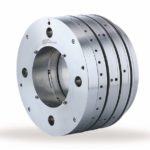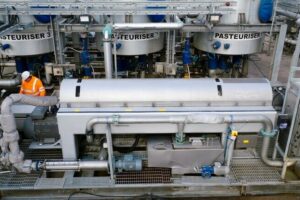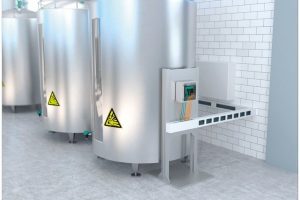Dr. Raps, is your company suffering greatly from the Corona pandemic?
Dr. Andreas Raps: I would say that we have come through very well so far. However, due to the economic crisis, large chemical companies had to reduce plant operations or even shut down entire plants. In addition, our service personnel could not visit the companies due to the corona-related access restrictions. Of course, all this had a negative impact on our service business and ultimately led to a loss of sales. There are currently also some challenges in the area of supply chain.
An important topic not only in the pandemic is digitisation. What goals does your company pursue in this area?
Dr. Raps: In our comparatively conservative industry, we want to be the first mover in digitisation. The aim is to offer customers a digital customer experience. That is why we are currently in the process of consistently establishing digital sales channels and business models that complement our traditional portfolio.
And how does EagleBurgmann intend to achieve this ambitious goal?
Dr. Raps: For this purpose, we founded the EB Digital Lab in 2019. This is a very young and innovative organisational unit in the company that develops digital products and services and makes them marketable. In doing so, we rely on agile working methods.
What does that mean?
Dr. Raps: The colleagues work detached from everyday routines and constraints. They have their own generously furnished area that offers space for interaction and discussion. Among other things, working methods that have proven themselves in software development are used. I am thinking, for example, of agile project management according to the Scrum method. It is based on a self-organised and interdisciplinary team in order to cover as many competencies as possible.
Sounds a bit like a start-up feeling.
Dr. Raps: Right. However, the Digital Lab is not located in a chic loft in Berlin, but at our headquarters in Wolfratshausen. This ensures traction and proximity to the core business. This is not about detached ideas, but about digital products and services that are developed from the customer‘s perspective.
How many employees work in the Digital Lab?
Dr. Raps: Currently 20 people. In addition, there are so-called split heads. These are people who are actually based in a different organisational area and work project-related or only for a certain period of time in the Digital Lab.
I suppose these will be very young people?
Dr. Raps: Compared to the rest of the workforce, the employees in the Digital Lab are significantly younger. Ultimately, it depends on the right mix because experience is also needed.
Which projects are currently being worked on in the Digital Lab?
Dr. Raps: Digital maintenance concepts, i.e. condition monitoring and predictive maintenance, as well as an innovative customer portal. We not only want to use the latter as a digital sales channel, but also to provide our customers with a wide range of information about the seals they use. This also includes data that is recorded directly in the seal via condition monitoring on site at the user‘s site.
Did I understand this correctly: You integrate operating and status data recorded at the customer into the customer portal?
Dr. Raps: In principle, yes. You have to think of condition monitoring and predictive maintenance as a precursor to our customer portal. With condition monitoring, we continuously record the data of a seal that is in use by the customer. This data will be processed. The evaluation provides us with an overview of the performance of the product used, from which the condition of the seal can be derived. If, for example, a product reaches a critical condition or the end of its service life, the ordering process of a spare part or product can be initiated directly via the customer portal.
The central intersection for the entire process is therefore your customer portal. What will be possible here?
Dr. Raps: In the future, we want to give the user a complete overview of all EagleBurgmann products used. In the customer portal, they can manage their products, check performance, automate orders or place service orders.
The prerequisite for this scenario is the recording of the operating and condition data of the seals. What paths are you treading here?
Dr. Raps: Here we rely on sensors that are integrated into the seal. To achieve this, however, some constructive challenges must be overcome. On the one hand, the sensors must be so small that they fit into the seal. On the other hand, the seal design must be adapted to such an application. And last but not least, the entire unit of seal and sensor must withstand aggressive media, high temperatures, vibrations, etc.
At what stage of development is the whole thing?
Dr. Raps: At the moment, we in the Digital Lab are dealing with the question of how we can obtain the necessary data. Ultimately, it‘s about finding the right sensor or sensors that provide us with the appropriate data in the demanding environment of a mechanical seal. In addition to test runs on our test bench, we are already testing in the first pilot applications. I am optimistic that more pilot applications will be added in the course of 2021. We expect the right series maturity in the next three years.
Surely you also work together with other partners during development.
Dr. Raps: Yes. Internally, the Digital Lab cooperates very closely with the Research & Development department of EagleBurgmann, externally also with research institutions such as institutes and universities. But the most important thing is that we are in close contact with our customers. We need to understand what solutions they expect from us and where their so-called pain points are so that we can address them.
What points please?
Dr. Raps: Pain points. In the digital lab language, they stand for the very critical aspects. We want to know what the customers’ biggest challenges are and how we can help them to make life a little easier.
Did your new CobaDGS turbocompressor seal also emerge from such a pain point?
Dr. Raps: In a way. Compressor manufacturers are confronted with ever higher pressures in applications. These can no longer be mastered with conventional seals. A solution had to be found.
What type of seal is this?
Dr. Raps: The CobaDGS turbocompressor seal is based on the Cobaseal series. This is a gas-lubricated mechanical seal in the coaxial version. Coba stands for Coaxial Barrier Seal. The seal consists of a rotating and a static ring. The rings form the gas-lubricated sealing gap, usually 0.003 to 0.005 mm. A sealing gas,usually nitrogen, is fed through the static ring into the sealing gap and then forms a barrier layer. The CobaDGS works analogously, but is characterised by changed materials and an optimised design. For example, components were reinforced, the geometry of the rings improved and the gas-transporting grooves redesigned. As a result, much higher pressures are possible. We are talking about over 160 bar versus 10 bar before. Silicon carbide is used for the rotating ring. An important criterion in the development was that as little nitrogen as possible is consumed or escapes into the process.
Can Cobaseal and CobaDGS seals be combined?
Dr. Raps: Yes. The combination of the two seals always makes sense when there are increased pressure requirements and a significantly increased sealing performance is required. However, both variants have different functions in one application. In combination, the CobaDGS acts as the main seal, while the Cobaseal is then suitable as a bearing seal.
Can you specifically name an application in which the CobaDGSsealing system can be used?
Dr. Raps: A good example is Liquified Natural Gas. The use of this seal significantly reduces the escape of methane gas. If all compressors in LNG pipelines in Germany were equipped with the CobaDGS sealing system, emissions in the order of 770,000 households could be saved. Another application example is the propylene oxide compressors used in the chemical industry.
You describe the CobaDGS as a zero-emission solution. Can you please explain that?
Dr. Raps: In the mechanical seal, the sealing gas in the sealing gap prevents the leakage of process gas. In the case of CobaDGS, the reverse even occurs. Instead of the process gas or sealing gas escaping into the environment, sealing gas enters the process in minimal doses. That‘s why we call this seal a zero-emission solution. Such a solution is particularly useful for the transport of environmentally harmful gases.
Are there any other advantages?
Dr. Raps: In addition to zero emissions, the issue of clean nitrogen in the sealing gap plays a particularly important role. The fact that there is no contamination in the sealing gap increases the service life of the seal and makes it less susceptible to interference.
When will you launch the product on the market?
Dr. Raps: We officially presented the CobaDGS at Achema Pulse. It is already in use by some customers and the response to the seal is extremely positive. Above all, the robustness was convincing in the test runs. We are here at the right time with the right product and we are very pleased that we as EagleBurgmann can also make our contribution to reducing CO2 on the way to carbon neutrality.
EagleBurgmann GmbH, Wolfratshausen, Germany
The interview was conducted by: Lukas Lehmann
Editor-in-Chief
Eagleburgmann: Facts and Figures
EagleBurgmann‘s product range for the chemical industry ranges from mechanical seals for pumps, agitators and compressors to magnetic couplings, gaskets and carbon floating ring seals. In addition, there are sealing supply systems and expansion joints. The medium-sized company also has various sealing series in its portfolio for the pharmaceutical industry. These include, for example, the Agitator seal of the MR-D series or the dead- and gap-free SRG1 pump seals with electropolished surfaces.
EagleBurgmann employs around 5,700 people worldwide. In Germany, about 1,600 people work for the company; most of them at the headquarters in Wolfratshausen. Sales in 2020 amounted to approximately 800 million euros. In view of the economic impact of the corona pandemic, only a slight increase in sales is expected for 2021.
„Pain points in the Digital Lab language stand for the very critical aspects. We want to know where our users are most pressed.“









